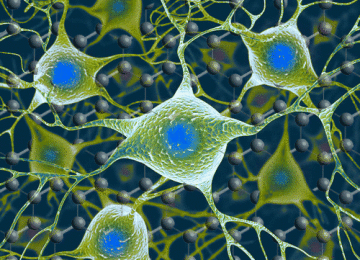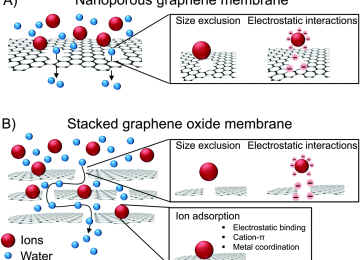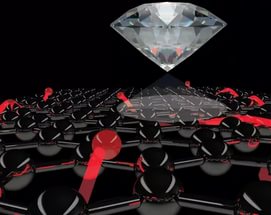Graphene Textile new smart textiles manufacturing by 3D Print
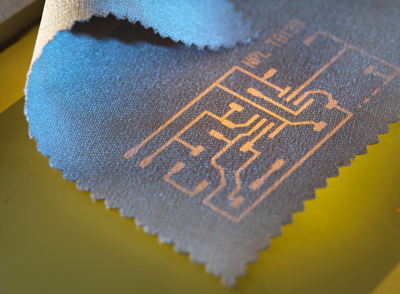
Graphene now entered in the new field its smart textile Electronic textiles offer a form of functional devices integrated into objects that are essential to humankind: clothes. Devices embedded in textiles would enable a form of electronics that is comfortable to wear, lightweight, easy to transport and imperceptible.
Background in graphene, smart textiles and medical devices is helping open up new markets. Initial work on printing graphene has shown that it is a highly promising material for applications ranging from medical and fitness monitoring through to smart bandages.
250 years after Manchester created the first industrial revolution in textiles it is happening again, but this time instead of coal and steam, 3D Printing is driving this new mass production industry. Manchester based Tamicare has spent the past decade developing and patenting a unique system to mass produce 3D printed textiles, and their first production line capable of producing up to three million items a year has just gone into operation. The system virtually eliminates waste and uses environmentally friendly recyclable materials, and this tech of 3D printed textiles uses now to make smart graphene textile.
Founder and CEO of Tamicare Tamar Giloh explained: “Our Cosyflex® production system allows 3D printing to be used for mass production for the first time ever. Instead of creating items one at a time, Cosyflex® enables high volume high-density production from a small footprint at costs far below traditional manufacturing processes.”
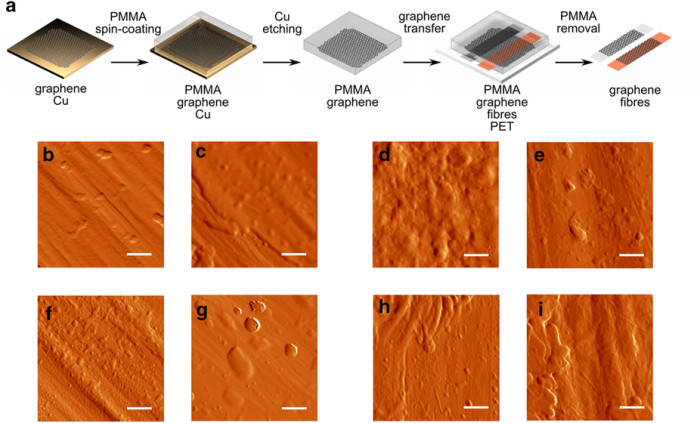
Appear steps to graphene coverage in the untreated fibers
How manufacturing graphene textile :
In common to all devices is the need of a conducting transparent material to be used as electrodes, wiring, etc. Such material has to be flexible and produced at low temperature in a non-destructive processing deposition method, characteristics observed in carbon materials. Several materials have been proposed as transparent electrodes for wearable electronics. For example, the use of carbon nanotube-graphene hybrid fibers has enabled flexible electrodes with an electrical conductivity of 10 S/cm or higher. However, the use of chemical vapor deposition at high temperatures (as high as 1150 °C) is unsuitable for textile substrates. An alternative to direct growing is the use of graphene oxide (GO) which can produce conductive fibers at lower temperature, through an electrical potential, or by wet-spinning. Furthermore, a nanocomposite comprised of chemically converted graphene and carbon nanotubes (CNT) has enabled to achieve a conductive layer with 240 Ω/sq at 86% transmittance on plastic substrates15, but in very caustic media with sulfuric acid and nitric acid for CNT dispersion and graphene production. Moreover, it is an exceptional challenge to assemble 2D microscopic chemically modified graphene sheets into macroscopic fibers due to their irregular size and shape and too unsteady layer stacking, thus only a few attempts have been made. Nevertheless, none of these approaches results in the required transparency to fabricate completely built-in and concealed textile devices
Monolayer graphene offers transparency, flexibility and mechanical strength combined with electrical conductivity. In addition, its conductivity can be enhanced by chemical functionalization and its Fermi energy can be shifted by engineering the work function through chemical doping, and adjust the electrode with the carrier type needed26. Therefore, the use of graphene as electrode would minimize the contact resistance and reduce the operating voltages. Here, we demonstrate that conductive textile fibers, bendable and transparent can be obtained by wet transfer of monolayer graphene to a polypropylene and a polylactic acid biobased fiber. Polypropylene is one of the more commonly polymers used in textiles due to its specific weight, creating the lightest fiber yarn of all synthetic and natural fibers. The appropriate treatment of polypropylene leads to very different uses like diapers, underwear, or warm-weather clothing. Polylactic acid is considered as the biopolymer par excellence to be applied in textile production due to its ability to be extracted from renewable natural resources by only one melt process from renewable natural resources, allied to its thermoplastic and mechanical properties. The capacity of producing polypropylene and polylactic acid biobased conductive fibers maintaining the original aspect gives rise to completely embedded textile electronics.












